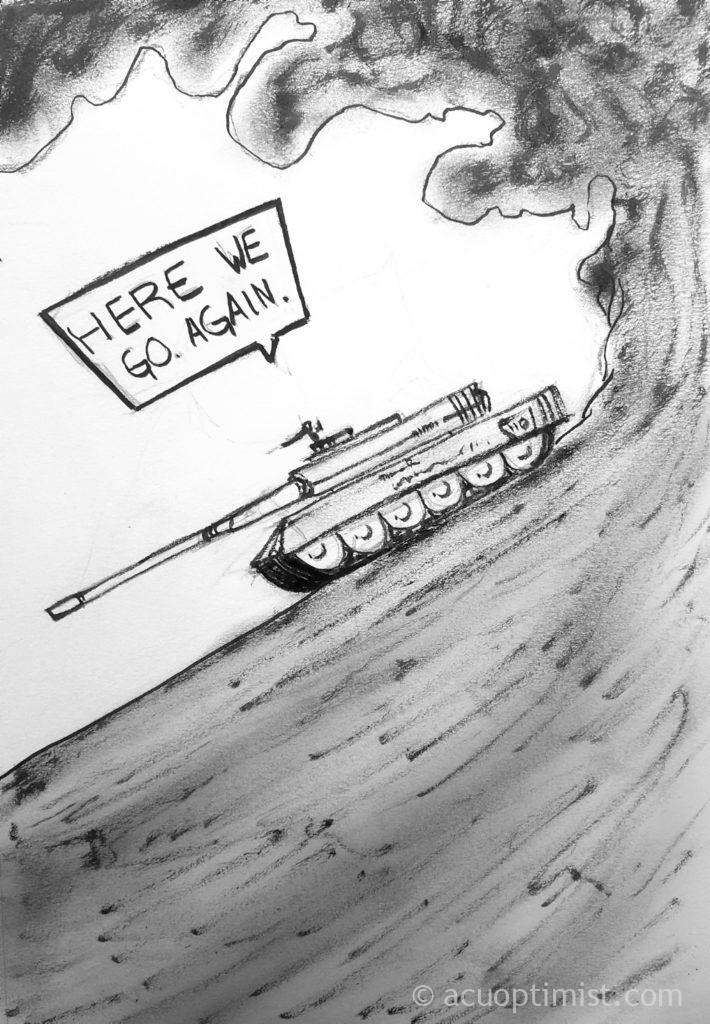As tension increases between the U.S. and Iran and twitter uses this news to create funny memes and jokes about WWIII, we must not fail to regard the intensity of the situation at present.
The killing of one of Iran’s most well known military leaders, Major General Qasem Soleimani by an American drone strike was just one of the main causes for the sudden spark of conflict between our two nations. Although, tensions have been on the rise for over a decade.
A recent breakthrough under the Obama administration came when the U.S. and Iran negotiated the Iran nuclear deal, halting Iranian nuclear development in exchange for lifted sanctions on the Iranian economy.
In May, the Trump administration made measures to withdraw from the Iran nuclear deal and reintroduce sanctions. In June, Iran responded to the sanctions by announcing its plans to increase its uranium stockpile, breaking the agreement of limits under the nuclear deal.
Most recently, after the killing of Iran’s top military leader, Iran has begun to retaliate. Iranian hackers gained access to the Federal Depository Library Program’s website and posted a message of threats against President Trump and pro-Iranian sympathy.
Iranian missiles were fired against Iraqi bases that housed U.S. troops. Iranian state media says the missile attacks are in response to the killing of Soleimani, according to “USA Today.” President Trump has chosen to respond to the missile attack diplomatically instead of militarily.
There is a possibility that the tensions could de-escalate if the U.S. chooses to continue to not retaliate, but the balance could so easily be tipped.
Possibilities of Armed Conflict with Iran
The fact is Congress has not authorized war since WWII in 1941. However, Congress has since then approved “use of military force”. The question of war vs. armed conflict depends on many factors but mainly whether nations are pursuing fight against each other directly or against “non-state actors,” like terrorist groups or other organizations separate.
Both Iran and the U.S. have on both sides, already overstepped boundaries of previous peaceful negotiations. Iran has a sophisticated military that threatens the U.S. in its capabilities more than other conflicts since WWII. So far, however, attacks have been small and aimed counterattacks. Continued Iranian missile strikes and cyber attacks may be expected.
Currently, the surrounding nations do not seem eager to join in on war between Iran and the U.S. Israel and Gulf States such as Saudi Arabia, U.S. allies in the area, seem unlikely to join unless aggravated by persistent Iranian attacks. Although WWIII is not impossible, it is a bit far fetched, as Twitter has insinuated. Countries like Russia and China may object to U.S. attacks in Iran, but are less likely to engage in conflict now than they were when the U.S. invaded Iraq in 2003 or Libya in 2011.
Possibilities of War with Iran
In the midst of the recent conflict, the prospect of a potential war with Iran seems closer now more than ever. As multiple consultants from Trump’s security council and the pentagon have stated, the difference between a war and approved military action– or peace all together– could simply come down to the communications and interpretations of each side. In the coming weeks, the importance of clear justification for actions taken, or the lack of them, could be the difference between a war or something much less detrimental.
Now more than ever, with the ambiguity of means and actions and an ocean’s distance between leaders, there leaves incredible room for interpretation of war-ready intent on either side. This also adds weight to the United States’s recent drone strike that killed Major General Qasem Soleimani.
The hasty actions from both sides and the timing surrounding them has brought contention to the point where what comes next, be it from Iran or the U.S., could likely be seen as an act of war. This could regretfully bring forward the harsh reality of a war with Iran.

